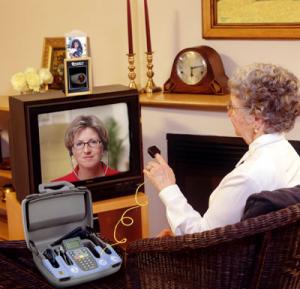New role of mobile phones: remote medical care
After the revolution in mobile phone information, there is a promising new role in telemedicine care - a way to use telecommunications technology to provide medical care and care. multiply when doctors and patients are thousands of miles apart.
Researchers in the US and Brazil say the development of a remote health care system is not expensive and simple by using normal cell phone cameras to collect data from the disease. multiply and transmit data to experts in other places for analysis and diagnosis.
The system is ideal for developing countries or remote areas lacking advanced medical equipment and skilled medical professionals. The system can transmit urgent medical data from battlefields, disaster areas and other dangerous places. The study was recorded in the publication schedule on May 15 of the American Chemical Society's Analytical Chemistry publication.
The key to successful treatment is rapid and accurate diagnosis. But some areas, especially developing countries, have limited access to advanced medical equipment and skilled medical personnel that require rapid diagnosis. A more practical and better system for performing medical diagnostics in remote areas is essential.

Telemedicine.
Mobile phones are inexpensive devices that nearly half of the world's population is using. There are millions more people every year using mobile phones in countries in Africa, India, China and South America. When mobile phones are equipped with video cameras, they can be used in remote areas such as the eyes and ears of a doctor without going to the place.
The lead researcher, Dr. George M. Whitesides, professor of chemistry at Harvard University in Canbridge, Mass, said the wireless communications industry is and will become a global tool that can be used for medical examination. Two recent studies by researchers show that mobile phones can be used to receive and transmit images of wounds and distractions from other diagnostic locations.
In the new study, Whitesides collaborated with researchers in Brazil to design the first system that combines video cameras in the phone with paper-based diagnostic tests and ease of use in color changes when exposed to certain disease markers. The researchers demonstrated the feasibility of the system by using test papers to collect and characterize the artificial urine samples because urine is easily obtained from patients and has many imprints. sick.
By using simple mobile phones , scientists took pictures of discolored test papers and transferred images from far away to an expert in a remote location. Skilled experts accurately measure the amount of glucose and protein used as signs to diagnose kidney diseases through test-grade images. Researchers say similar tests can be done through human fluids such as tears and saliva.
Besides diagnosing diseases in humans, the system can be used to detect diseases in plants and animals and to check water and food quality. Developing cheaper diagnostic tests and mass-production floors will make the system more widely used in the future according to Whitesides, who is known for pioneering research for medical diagnostic tests. present in developing countries. He was also the recipient of the Priestley Medal 2007, the highest honor of the ACS.
- 40 years of mobile phones
- Mobile phones are more important than sex
- Vending machines serve by mobile phones
- Children contaminated by mobile phones are twice as big as adults
- Mobile phones make children more vulnerable to stress
- Mobile phones help diagnose diseases
- In 2030, the hospital may only be a thing of the past
- Frequent use of mobile phones can cause cancer?
- Ways to use your phone to avoid cancer
- Japan tested the use of mobile phones in preventing epidemics
- More dirty items ... toilet
- Prohibit turning on cell phones on airplanes - fearsome fears?
 Green tea cleans teeth better than mouthwash?
Green tea cleans teeth better than mouthwash? Death kiss: This is why you should not let anyone kiss your baby's lips
Death kiss: This is why you should not let anyone kiss your baby's lips What is salmonellosis?
What is salmonellosis? Caution should be exercised when using aloe vera through eating and drinking
Caution should be exercised when using aloe vera through eating and drinking